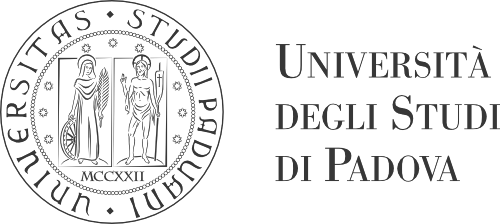Second Level Degree in Mathematics
Jump second level menu- Courses
- Timetable
- Exams
- Individual study program
- Student seminars
- Thesis
- Thesis Archive
- Graduation dates
- Contacts
MODERN PHYSICS - 8 CFU
Teacher
Daniele Bertacca
Scheduled Period
I Year - 2 Semester | 28/02/2022 - 11/06/2022
Hours: 64 (8 esercitazione, 56 lezione)
Prerequisites
The student should know the fundamentals of Classical Physics related to the fields of Mechanics, Mathematical Physics, Electromagnetism and Thermodynamics.
Target skills and knowledge
The course highlights the theoretical issues underlying the scientific revolution that replaces classical mechanics and electromagnetism with special relativity and quantum mechanics.
Examination methods
Oral examination.
Assessment criteria
To evaluate the understanding of the theoretical concepts and to check the ability of solving exercises related to the topics of the course.
Course contents
Quantum Mechanics:
-The crisis of classical physics: the Photoelectric Effect, the Davisson-Germer experiment. Compton effect. Atomic Spectra. Rydberg’s formula. Thompson’s model and Rutherford’s model. Bohr’s postulates and their consequences.
-Young’s interference experiment : the behavior of classical particles, of waves and of quantum particles. Heisenberg Uncertainty Principle and its consequences.
- The formalism of Quantum Mechanics and its physical interpretation: wave-functions, Hilbert spaces, basis, states; observables, self-adjoint operators; spectrum, eigenvalues and eigenvectors, spectral family; Dirac's formalism; causal time evolution for conservative systems, stone theorem; preparation of states and measures.
- General consequences of the postulates, the Heisenberg uncertainty principle, complete sets of compatible observables; composite systems.
-Solution of the Schroedinger equation for conservative systems: series expansion in energy eigenstates; time evolution of the wave function; Born’s interpretation of wave functions; wells and potential barriers in one-dimensional systems; the harmonic oscillator in 1d, creation and annihilation operators, spectrum and eigenfunctions of the Hamiltonian; free particle in 3d.
- Quantization of angular momentum: commutation relations, spectrum, orbital angular momenta and spherical harmonics, composition of angular momenta; Spin.
Special Relativity:
Galilean transformations. Galilean Relativity. Electromagnetism and Galilean relativity. The Michelson-Morley experiment. The postulates of Special Relativity. Observers and measures of space and time. Relativity of simultaneity. The Lorentz transformations. The Minkowski diagrams. Invariance of space-time interval. Length contraction. Time dilation. Light-cones and causality. Composition law for velocities. The Doppler effect. Twin paradox. Four-vectors. The Poincaré group and the Lorentz group. Covariant and controvariant tensors. Metric tensor. Transformation laws for fields. Four-velocity, four-momentum and four-force. Relativistic kinetic energy. Mass-energy equivalence. Relation between energy and momentum. Massless particles. General description of scattering: elastic and inelastic scattering. Kinematical invariants. Two-body elastic scatterings. Decays. Electromagnetic tensor. The Maxwell equations in covariant form. Transformation law for electromagnetic fields. Invariants for electromagnetic fields. Charged particles in electric and/or magnetic constant fields. Four-current for point-like charged particles.
Planned learning activities and teaching methods
Additional notes about suggested reading
Textbooks (and optional supplementary readings)
- Landau and Lifshitz, The Classical Theory of Fields, Butterworth-Heinemann,, 2980.
- Gianfranco Sartori, Istituzioni di meccanica quantistica, Padova, Cortina, 2004.
- M. Gasperini, Manuale di Relatività Ristretta, Spinger-Verlag, 2010.
- David J Griffiths, Introduction to Quantum Mechanics, Pearson Prentice Hall, 2004.

